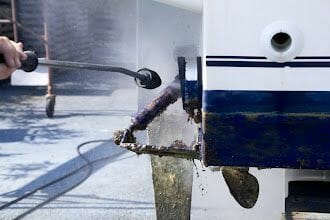Aquatic hitchhikers are invasive species that can be unintentionally transported from one body of water to another, typically by attaching themselves to recreational water equipment like boats, trailers, and fishing gear. Once introduced to a new environment, these hitchhikers can cause harm to native species and ecosystems, impact human health, and result in economic loss.
This article aims to educate readers about the dangers of aquatic hitchhikers, as well as provide practical advice for preventing the spread of invasive species. By taking appropriate actions, boaters, anglers, and other water users can protect their favorite aquatic habitats and help maintain the biodiversity of water bodies worldwide.
What Are Aquatic Hitchhikers?
Aquatic hitchhikers can be any organisms that are not native to a particular body of water and have the potential to cause harm to a new ecosystem when introduced. The most common aquatic hitchhikers include fish, mollusks, algae, and plants. Some well-known examples of aquatic hitchhikers include zebra mussels, Eurasian watermilfoil, and Asian carp.
Environmental Impacts of Aquatic Hitchhikers
Invasive species have a range of negative effects on the environments they invade. They can:
- Outcompete native species for resources like food or space
- Prey upon or parasitize native species
- Introduce new diseases or parasites
- Alter the structure or function of ecosystems, sometimes with irreversible damage
- Create monocultures or dense mats that interfere with water recreation and navigation and disrupt local biodiversity
Socioeconomic Impacts of Aquatic Hitchhikers
Invasive species can also have significant societal and economic consequences. They can:
- Result in considerable control and management costs to land and water managers
- Damage infrastructure like water supply systems or power plants
- Reduce property values in affected areas
- Decrease tourism and recreational opportunities around the afflicted waters
- Impact commercial and recreational fishing and aquaculture industries
How Aquatic Hitchhikers Spread
There are several common pathways for aquatic hitchhikers to spread, with many involving human activities. These include:
- Boats, trailers, and fishing gear: Boats moving between infested and uninfested bodies of water can inadvertently carry aquatic hitchhikers on their hulls, water intake systems, or in ballast water. Also, trailers, fishing gear, or other equipment can transport invasive species.
- Release of ornamental plants, fish, or live bait: Releasing plants or animals from aquariums or ponds, even when they seem harmless, can lead to the spread of invasive species.
- Flood events: Aquatic hitchhikers can be transported via connecting waterways during flood events.
Prevention Tips: Stopping the Spread of Aquatic Hitchhikers
Preventing the spread of aquatic hitchhikers is a shared responsibility among water users. The following guidelines are suggested to minimize the risk of spreading invasive species:
Clean
After leaving a body of water, thoroughly clean your boat, trailer, and equipment, removing any visible plants, animals, or debris before transporting them to another water source. Make sure to clean the hull, water intake systems, and any other areas where hitchhikers might hide.
Drain
Drain all water from your boat and equipment, including the ballast, bilge, live wells, and bait containers. Make sure to drain on dry land and away from any water source.
Dry
Allow your boat and equipment to dry for as long as possible (at least five days) before entering another body of water. Drying in the sun can help further reduce the likelihood of hitchhiker survival.
Dispose
Never release plants, fish, or animals into a body of water unless they originated from that water source. Instead, dispose of unwanted or unused live bait, aquarium species, and plants in the trash.
Educate
Share information about aquatic hitchhikers and prevention methods with friends, family, and other water enthusiasts. Familiarize yourself with your local laws and regulations regarding invasive species transport.
Protecting our Waters Together
Aquatic hitchhikers pose a severe threat to the health and integrity of our water ecosystems worldwide. By practicing responsible water recreation and following recommended guidelines, each person can play a vital role in preventing the spread of invasive species. Together, we can help protect our waters and ensure a thriving environment for the many benefits they provide.


